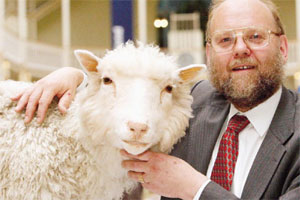Chromosomes are small, filiform structures that carry genetic material. They are made up of DNA, RNA and proteins and are located in the nucleus of the cell. They have two parts called chromatids that are joined by a centromere. This last one is fundamental when it comes to insuring the correct distribution of the duplicated chromosomes in offspring cells during cellular divisions.
Chromosomes also have structures called telomeres, which are located at the ends and are in charge of preventing the endings of the chromosomes from tangling up and sticking to each other. They also help homologous chromosomes pair-up and criss-cross during meiosis. In humans, each cell contains 46 chromosomes, set out in 23 pairs. Of these 23, the 22 first are dubbed autosomes or autosomic, and the 23rd pair are the sexual chromosomes, also known as gonosomes or heterochromosomes (X and Y). Each human cell contains two copies of each autosome and two sexual chromosomes. Women have two identical X chromosomes and men have an X chromosome and a Y chromosome. Y is smaller.
This difference in size is responsible for a certain amount of traits relating to sex. For example, hemophilia is a blood coagulation disorder caused by the absence of a protein (factor VIII), which, generally, is found in the X chromosome. A woman with two X chromosomes has two factor VIII genes, so if a gene is abnormal the other one produces enough coagulation factor of the blood, thus preventing hemorrhages. On the other hand, men only have one X chromosome, so they cannot produce enough coagulation factor if a gene is defective because there is no second gene to replace it. For this reason, a woman carrying an abnormal gene does not develop hemophilia, they pass it on to their male offspring and they develop it.
Polygenetic heritage
Most of human characteristics like size, weight, among others, are determined by groups of genes that act together, a guideline known as polygenetic or quantitative heritage.This way, for example, a person’s size might only be controlled by two genes (AA and BB). But each of these genes can have to alleles (variations): A and a and B and b (the capital is used to indicate the dominant gene and the lowercase, the recessive). The A and B genes contribute to an individual being taller and the a and b genes to them being shorter. A mid-sized person has a recessive and a dominant gene, resulting in an AAaa BBbb genetic composition. However, if two mid-sized children grow up and have children, the genes are distributed randomly.The variation, in this case of size, is a continuous thing. This, because tall parents have tall children, but not as tall as them. Likewise, short parents often have children that are taller than them. This is called regression to the average and appears in several human traits, like intelligence.
Cloning
In its beginnings, cloning was used to designate the population of cells or organisms obtained by vegetative (asexual) reproduction from a single cell. Later, when genetic engineering began the experiments to manipulate a gene or fragment of DNA in bacteria, the term was expanded to gene cloning. However, in superior animals, this concept has yet to be applied as it was impossible to make them reproduce asexually amongst each other. Thus, experiments began, and in order to clone these species of animal, the nucleus of a fertilized cell (zygote) was surgically eliminated and replaced by the nucleus of another animal. This experiment was conducted on amphibians. This way, science managed to bypass the most important and until then mandatory step: fertilization.After several attempts, studies were successful and cloned frogs were able to be produced, one exactly like the other. Embryo manipulation techniques began to take hold as did assisted reproduction, finally reaching Dolly, the first mammal (sheep) cloned from an already differentiated adult cell. Presently, the objective of cloning is to achieve the production of vaccines and medication that help fight diseases like hemophilia.
Specifically, these are several types of cloning:-Molecular cloning: it refers to the process of isolating a DNA sequence and obtaining multiple copies from it. – Cellular cloning: it is produced when the expansion of a single cell with certain characteristics is desired. It is performed in vitro. – Cloning of asexual organisms: new organisms are created with the same information of an already existing cell. It is an asexual reproduction (there is no fertilization) method, because there is only one parent involved. This form of reproduction is very common in organisms like amoebae and other unicellular beings.- Artificial cloning of organisms: it is a technique based on nuclear transference, in which two cells participate (the one that gives the genetic material and the one that accepts it). This last one is almost always an ovocyte that has had its chromosomes removed. Then, the ovocyte is joined to the cell that has the genetic material of the individual that is to be cloned by electroshock. After this process, the cell is injected into the uterus of a female. An example of this cloning is Dolly the lamb.








